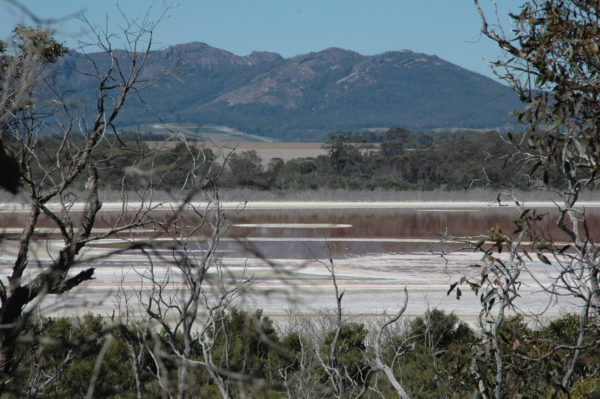Breathing life back into 4,500 hectares in WA

The project is part of Gondwana Link, one of the largest and most ambitious ecological programs in Australian history. Credit: Paula Deegan
In a pocket of WA’s South West, 4,500 hectares of once denigrated land represents the heart, resilience and dedication of the Landcare ethos.
Situated to the north of Albany, the Ranges Link – Stirling to Porongurup, is a transitional zone between the ecological wealth of the Stirling Range and Porongurup National Parks. And little over a decade ago, approximately 65% of the native vegetation of the area has been cleared for agriculture with cropping and grazing being the predominant land use.
Initiated as part of the Middle Oyster Harbour Project, a $1.5 million plan implemented by the Oyster Harbour Catchment Group and Friends of the Porongurup Range, the project has seen the local community protect over 4,500hectares of valuable bushland with over 400kms of fencing, restore wildlife habitat on another 650hectares, and protect many kilometres of waterways.
This has regenerated the landscape with native vegetation from tall karri forests to mallee-heath over the course of eleven years since 2009 and welcomed the return of endemic species including the rare Western Whipbird and the endangered Carnaby’s black cockatoo.
And project officer, Heather Adams, attributes much of the success of the project to sponsorship by Mt Barker Chicken, facilitated by Landcare Australia.
‘Initiated by Keith Bradby of Gondwana Link, the contribution by Mt Barker Chicken was remarkable with a total of $260,000 committed for Ranges Link from 2009 to 2017,’ she said.
‘Together with our Ranges Linkers, as we call ourselves, this sponsorship and funding from various State and Federal Government programs has helped continue the on-ground activities in the Ranges Link area – another 180 Km fencing, revegetation and weed control.
‘We have also been able to do flora and fauna surveys and encourage landholders to control pest animals – specifically foxes, cats and rabbits by organising district shoots and offering bounties.’
The project is part of Gondwana Link, one of the largest and most ambitious ecological programs in Australian history. Designed to protect and restore ecological resilience within one of the world’s biodiversity hotspots, from the south-western corner of Australia to the edge of the Nullarbor Plain, the completed Gondwana Link will stretch for 1000 kilometres.
For more information, go to gondwanalink.org



